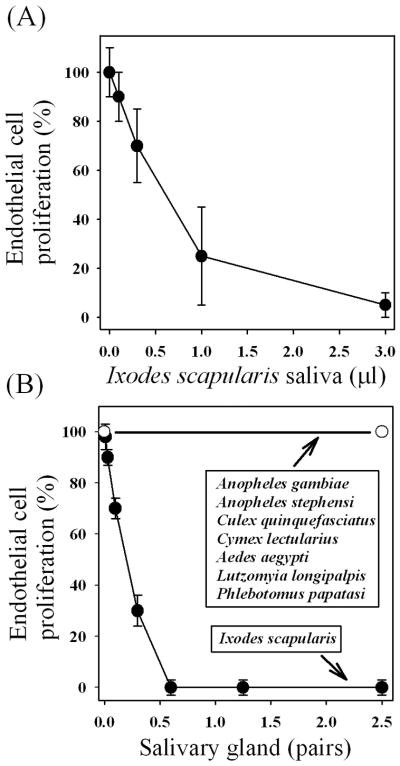FIG. 1.
I. scapularis saliva and salivary gland inhibit microvascular endothelial cell (MVEC) proliferation: comparison with the salivary gland from other blood-sucking arthropods. MVEC were cultured in the presence of EBM-2 Plus for 24 h at 37°C. The relative numbers of cells in each well and the percent inhibition of proliferation were determined using MTS solution. (A) I. scapularis saliva was added as indicated. (B) I. scapularis or other blood-sucking salivary glands were added as indicated. No inhibition was observed with An. gambiae, An. stephensi, Culex quinquefasciatus, Cimex lectularius, Aedes aegypti, Lutzomyia longipalpis, or Phlebotomus papatasi salivary glands (up to 2.5 pairs/assays; n = 8). Partial inhibition was observed with 1 pair/assay of Rhodnius prolixus salivary gland, and total inhibition was detected with ~1 pair/assay of Boophilus microplus salivary gland (not shown; n = 3). Similar results were obtained with human umbilical vein endothelial cells (HUVEC) for all salivary glands tested (not shown; n = 5).

